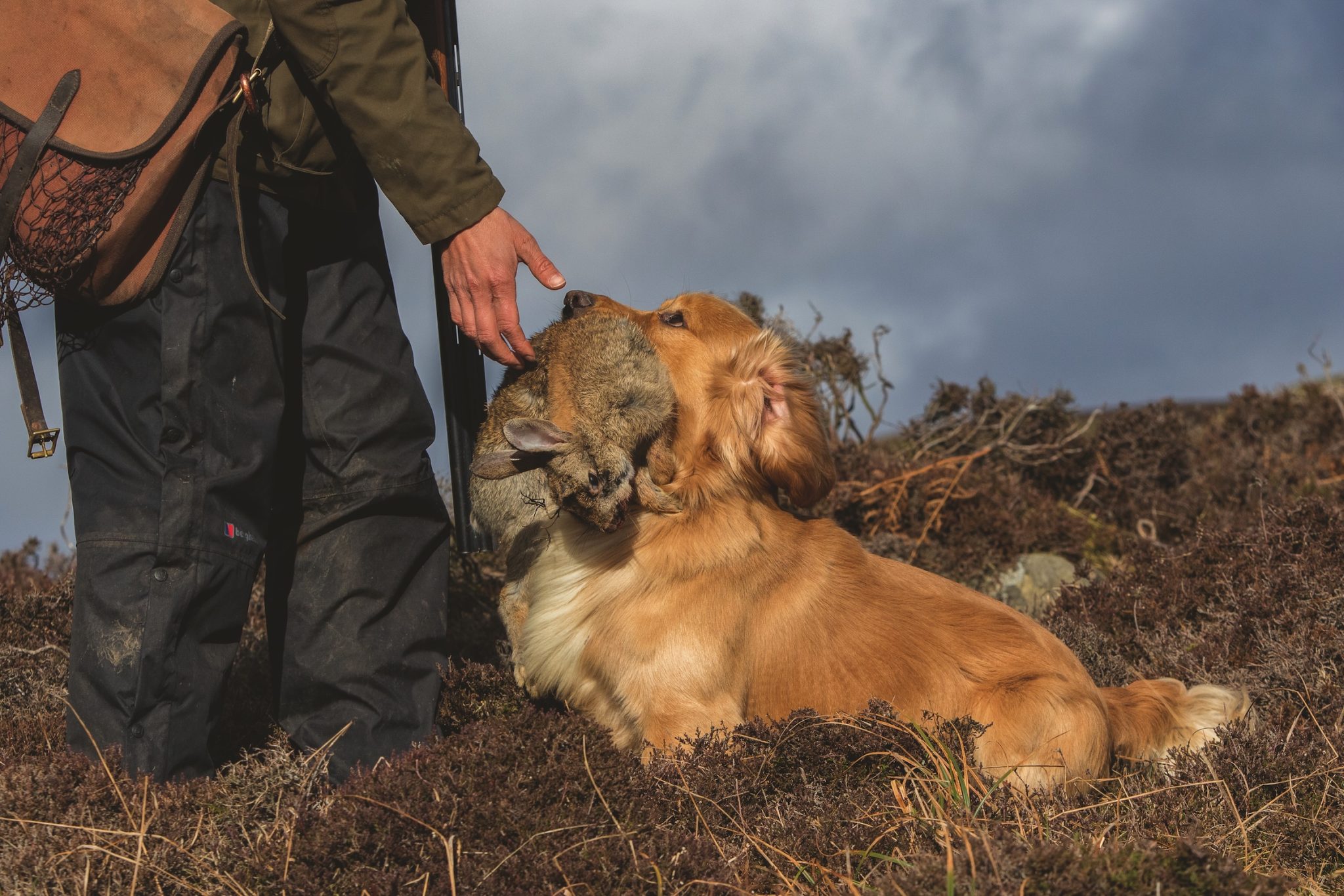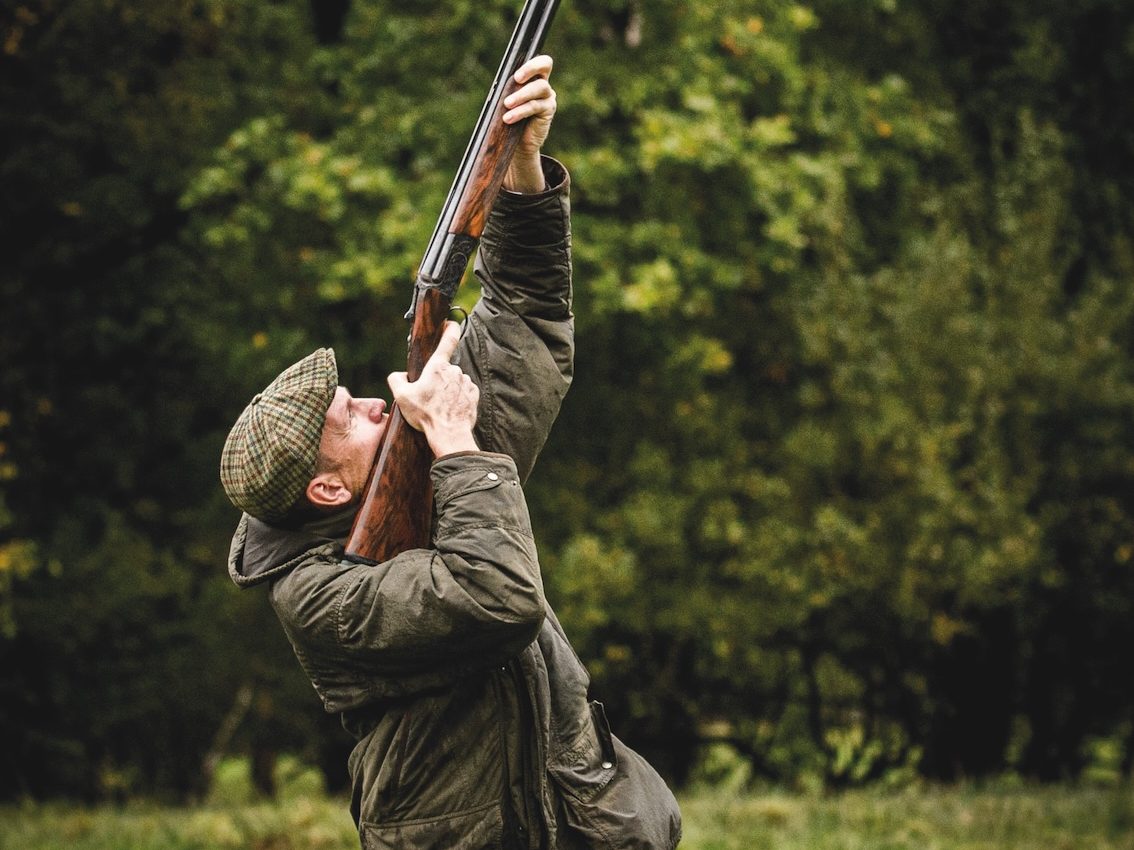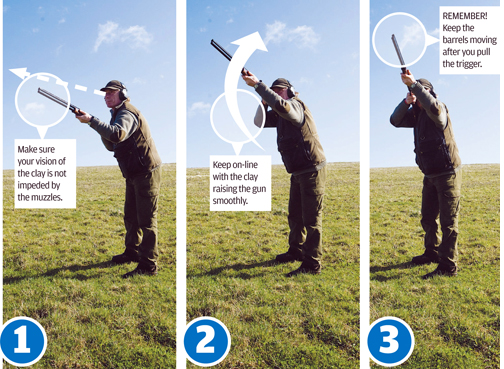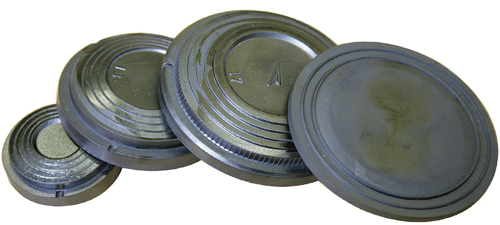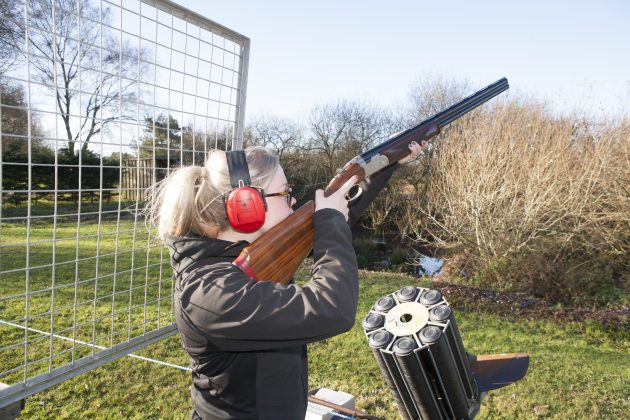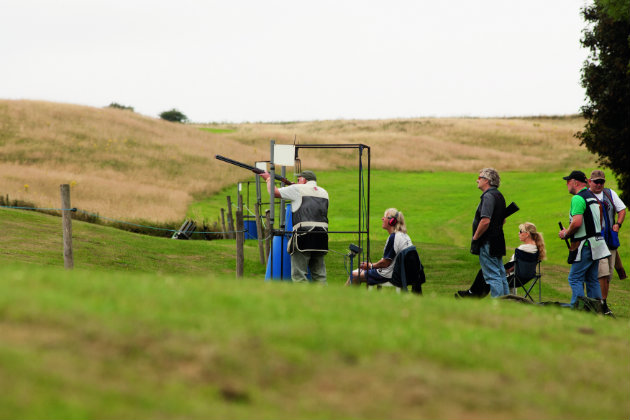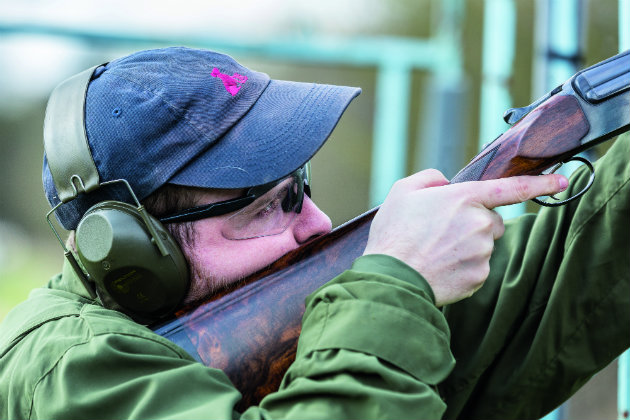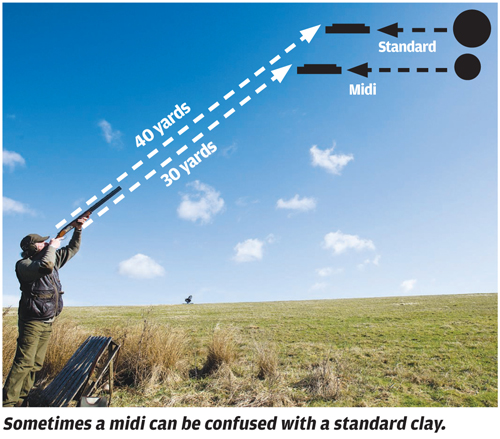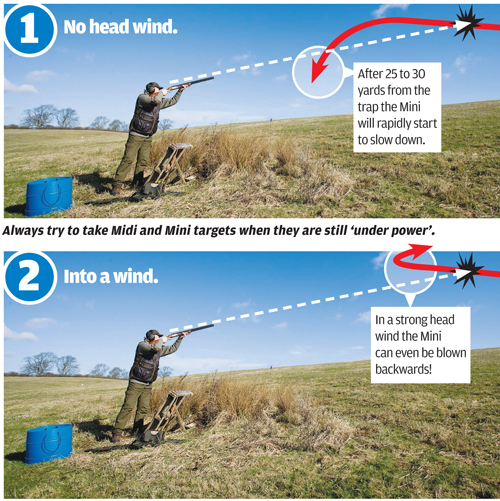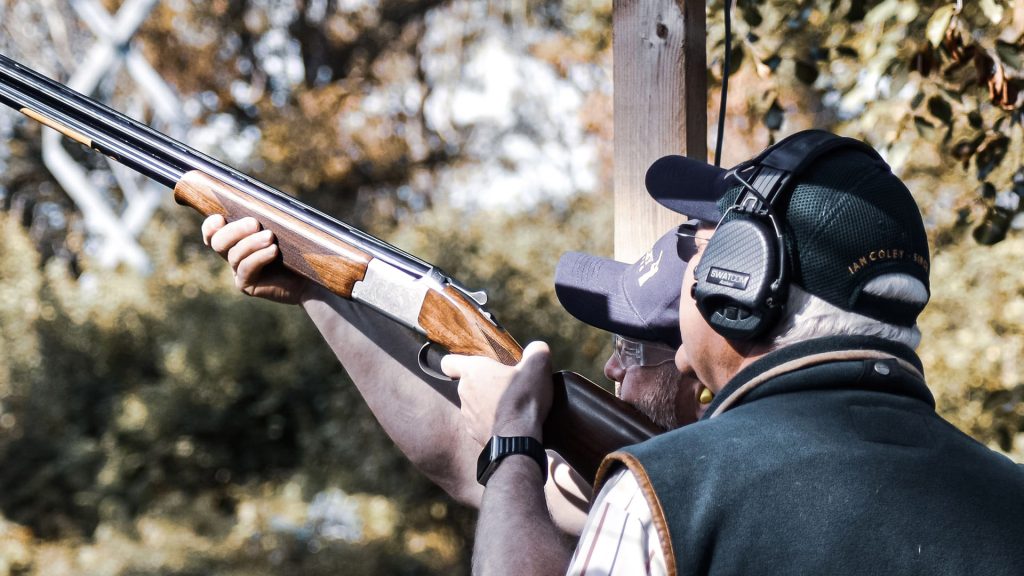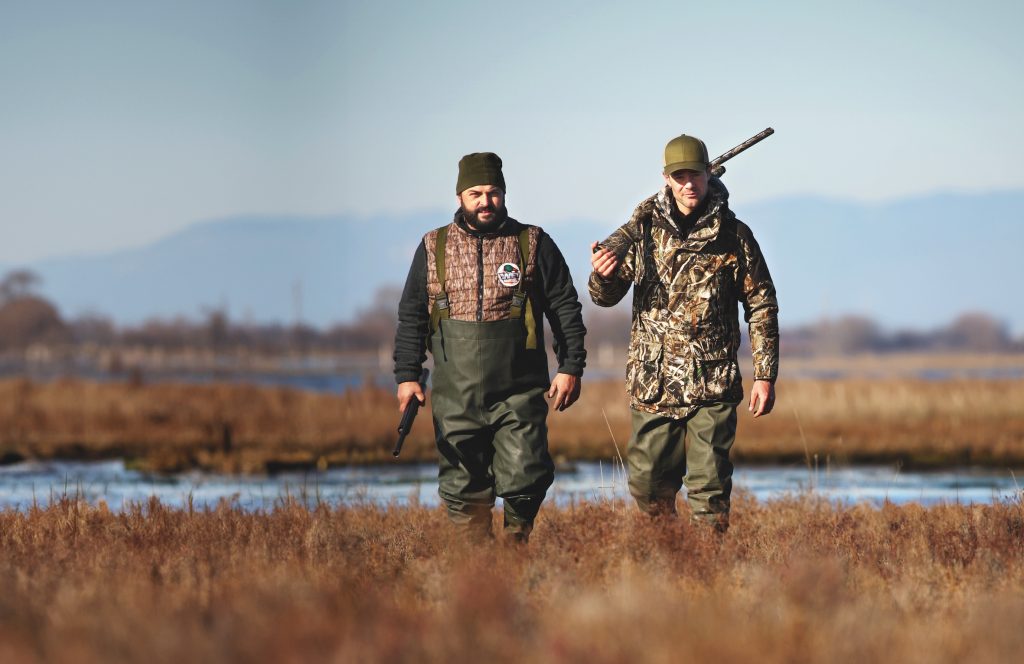Learn how to hit more targets by understanding the physics of clay pigeon shooting
Win CENS ProFlex DX5 earplugs worth £1,149 – enter here
How to deal with clays when they’re different sizes
Clay shooting: The size of clays being thrown can influence your shooting style and hit rate immensely.
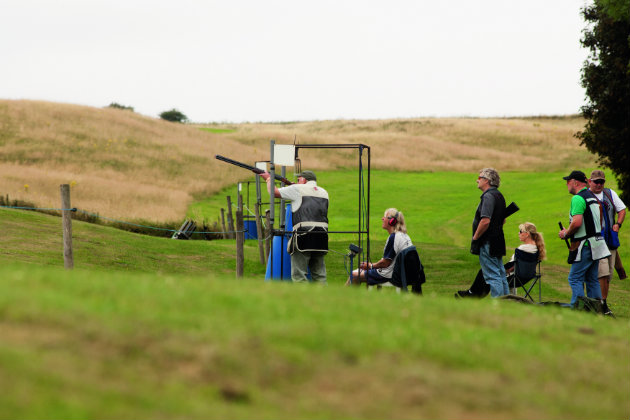
Recently I was attended a simulated game day and one of the stands made some of the shooters come a cropper.
Shot by teams of three, this stand featured a flurry of high driven birds, presented off the top of a hill over a wide ride between two banks of trees.
A flush
The birds were presented in such a way that the majority would be taken almost overhead by the line of guns. At any one time there were four or five clays in the air – regular clay shooters would simply call this a flush.
On inspection I decided that 90% of the targets presented were either minis or midis.
Standard clays
However, to keep us on our toes, the designer occasionally threw out a a single, standard size clay, which hugged the side of trees as it flew over our heads.
Most of these standard targets sailed over unharmed. That’s when I decided to write this article about dealing with different sized clays.
Shot as a single a standard probably wouldn’t have presented a problem to the average club shooter. These weren’t fast, had a consistent flight line about 25 yards up, coming almost straight towards and then over the shooter.
All the Guns had to do was track the target, pull in front of the bird and rely on instinct to decide when to pull the trigger.
However each team of shooters managed to dust the majority of the higher, faster (and generally harder) smaller targets that were whizzing above them. Which surprised me. Why were they hitting the easier standards?
How clays travel
It helps to know how each clay travels through the air.
The standard clay target is just over 4″ in diameter and will generally fly on a reasonably true path, although it can be affected by strong wind.
With a standard clay we all know what to expect.
The midi, however, is physically smaller than the standard clay, being around 3.5″ in diameter, and it can often exhibit different flight characteristics when released from a trap.
The midi will fly relatively ‘true’ as it is released but when its velocity slows it can appear to perform unexpected ducks and dives.
The mini is often thought to be a really tricky target to hit because of its small size – just under 2.5″ in diameter.
It appears to leave the trap like a bullet but it will travel on a consistent line until its velocity drops when it can be seriously affected by any strong wind.
Clayshooting lesson – high, slow-driven clays
Sean Ponting of Widdington Shoot has pretty much been there and got the T-shirt as far as Sporting and FITASC clayshooting goes. He has had 20 years…
What’s the difference between a battue and a chondel clay target?
Clay shooting: What’s the difference between a battue and a chandelle target? Do you approach the targets in a different…
Dealing with the difference
It’s the impression of speed, not the actual velocity, that’s important. That’s what the shooters on the simulated game day were finding hard to deal with. Because they were shooting more midis and minis, their sight pictures adjusted for these types of birds. By chucking in the odd standard target, the course designer lured them into giving the ‘perceived’ slower bird not enough lead.
Couple this with the fact that, compared with the smaller targets, the standard looked closer than it really was and it’s easy to see why confusion reigned and most birds were missed!
Dealing with the midi
The midi is one of the best sporting targets you can get. The clay itself is heavy enough to maintain a good speed over quite a long distance but, because it’s lighter than the standard target, it tends to come out of the trap slightly quicker.
- The general problem a lot of shooters have with the midi is assessing the range, and the amount of lead needed to break the clay. In addition, it’s it’s often quite easy to confuse the midi with a standard.
- On a Sporting layout if it isn’t obvious or stated on the stand what type of bird you’re shooting at, ask the referee or the trapper.Take your time and don’t try to rush your shot.
- Don’t let the thought of a midi put you off before you even get on the stand – take it exactly as you would any other bird.
Dealing with the mini
- It’s because minis are so small and light they struggle to maintain any sort of speed beyond 25 or 30 yards or so from the trap.
- Anything further than this and the bird starts to slow down considerably, even when it’s not windy, before starting to float gently forwards.
- In a strong headwind the clay can even float backwards when it loses momentum.
- The trick is to try and take the bird as early as you can, when it’s still under power. Don’t rush the shot, but the longer you leave it the more it’s going to be affected by the wind.
- On the plus side, because the mini is such a small, almost delicate target, even just one pellet from a cartridge is usually enough to break it and enable you to claim a kill.
Related Articles
Get the latest news delivered direct to your door
Subscribe to Shooting Times & Country
Discover the ultimate companion for field sports enthusiasts with Shooting Times & Country Magazine, the UK’s leading weekly publication that has been at the forefront of shooting culture since 1882. Subscribers gain access to expert tips, comprehensive gear reviews, seasonal advice and a vibrant community of like-minded shooters.
Save on shop price when you subscribe with weekly issues featuring in-depth articles on gundog training, exclusive member offers and access to the digital back issue library. A Shooting Times & Country subscription is more than a magazine, don’t just read about the countryside; immerse yourself in its most authoritative and engaging publication.




